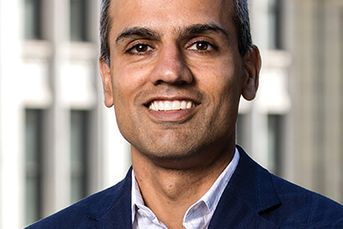Measuring a client’s financial health
With an eye toward addressing the industrywide challenges of effective client profiling, Omyen Corp. has developed the Personal Financial Index
With an eye toward addressing the industrywide challenges of effective client profiling, Omyen Corp. has developed the Personal Financial Index.
The index, derived from an individual’s financial health benchmarks, is similar in concept to a Fico score. Data are combined, weighted and entered into a straightforward “wizard” that requires detailed input in the areas of personal debt, savings discipline and personal risk management.
The result is a final score that can reach a maximum of 750. The higher the score, the better the client’s financial health.
The index, which can be tied in with a suite of software programs that Omyen offers, is being marketed to financial advisers and broker-dealers.
“Advisory firms license our technology and have it branded as well … [They] pay us either a flat monthly fee or a small monthly fee plus a fee based on the utilization. The value to these firms is warm-leads generation and lead conversion,” said Dinesh Sharma, Omyen’s founder and the creator of the index.
Omyen provides financial advice technologies to the financial services industry.
“Our goal is also to have financial advisers consider every financial transaction in terms of what it does to their clients’ PFI score,” Mr. Sharma said.
“There hasn’t been a serious effort from financial institutions to look at a customer holistically, partly because a single financial institution may not have all the financial products required,” he said.
“Historically, the financial services industry is transaction-oriented. You come up with a product — whether it’s a life insurance product, investment or what have you — and the idea is to figure out a way to sell it,” Mr. Sharma said.
Therefore, developing this tool required “a lot of hard work in understanding and analyzing issues across a set of financial disciplines,” he said.
“The PFI allows the client to be educated at their own pace. It’s a diagnostic tool first, as opposed to just jumping into a plan and then learning where the client is,” said Ray Shreder, director of investment management services for the Shreder Investment Consulting Group LLC.
He recently purchased the software for his practice.
“We like that it gives us an “arm’s length’ from the client because it is an externally developed, rules-based tool,” Mr. Shreder said.
“[The wizard that one fills out to determine their index] is deceptively simple-looking and captures the benefits of financial planning in the front end of the profiling process,” said Scott Stathis, managing director of Kehrer-LIMRA. The firm does research and consulting for bank brokerage operations.
Mr. Shreder and Mr. Stathis were provided by Omyen as people to contact about the index and the software. Profiling is a hot topic in the best-practices research at Mr. Stathis’ firm. Banking institutions “are always looking for ways to increase product distribution effectiveness, and this may be a good tool,” he said.
A simple score will compel clients to action better than a long, detailed profile document, said Mr. Stathis, who has reviewed the product. Several of his clients are considering the software, which was launched in July.
“A financial plan is very intimidating for a layperson, but an index can produce meaningful value and be simple and easy to understand,” Mr. Sharma said.
“At the end of the PFI exercise, there is a specific call to action to direct a consumer to the advisory firm. It creates a sense of urgency,” he said.
“Once prospective customers decide to work with the advisory firm, our platform allows them to share their information with the firm, avoiding any data re-entry,” Mr. Sharma said.
Client data can automatically integrate with other components of the index, including a customized financial plan, a customized asset allocation, a retirement income planner, a risk capacity index and a retiree health care planner, which is in development.
Advisers must be careful about introducing a client to the index .
“I like the idea, but it could set up a hopelessness that I don’t want to coach [clients] down from,” said Saundra Davis, an adviser with Sage Financial Solutions Inc., who works primarily with lower- and middle-income clients.
“Some personalities will become motivated by a low score, while others may get overwhelmed by it,” she said.
“I’m reluctant to put another number on people that would make them feel worse off. Not just lower-income clients; we’re talking about regular middle-income America now.”
Simplifying financial planning concepts for the public is key, according to Charles Farrell, principal with Northstar Investment Advisors LLC, who has also developed a personal-finance-related index — the Money Mass Index. This tool looks at the relationship among a person’s investible assets, debt and household income.
A complementary concept to the Personal Financial Index, the Money Mass Index is among a range of tools offered within Mr. Farrell’s book, “Your Money Ratios: 8 Simple Tools for Financial Security” (Avery, 2009), which is geared toward the general public.
“The ratios give you benchmarks at every age,” he said.
Individuals read the book to understand the fundamental concepts behind the tools, accessing them online via a code in the book.
“The easier you can make the goals for people, the more likely they can achieve them. The more math you can take out, the better,” Mr. Farrell said.
Learn more about reprints and licensing for this article.








